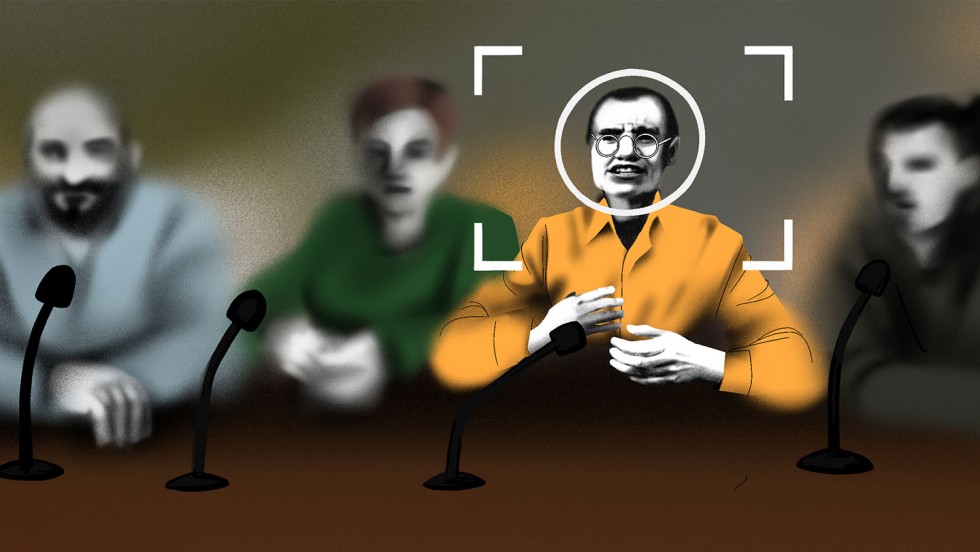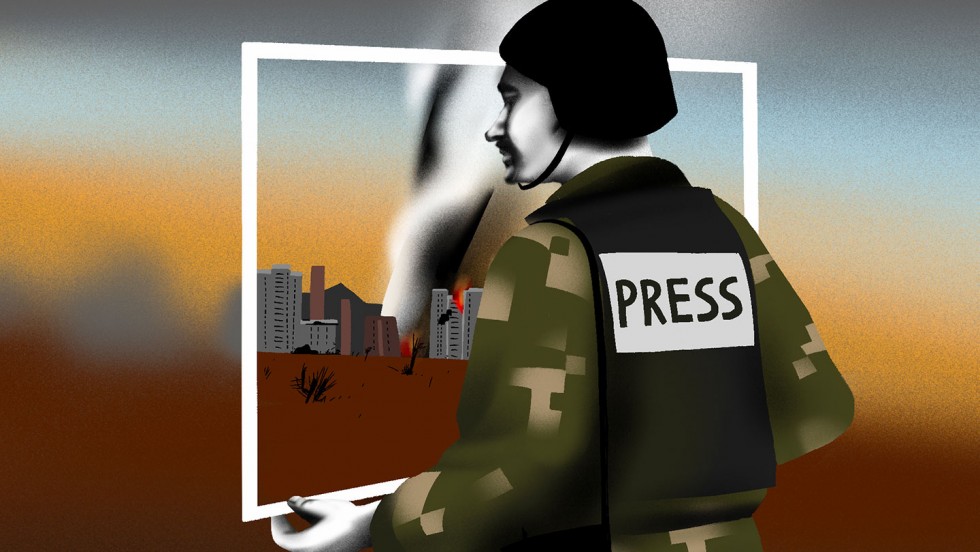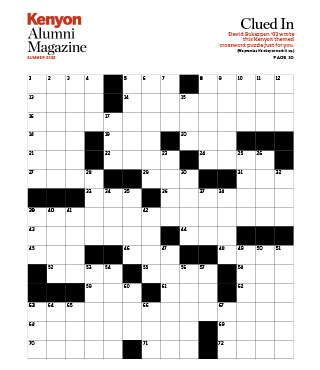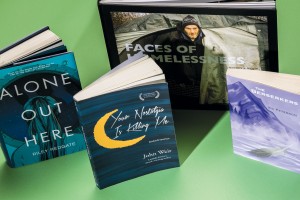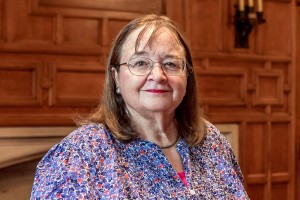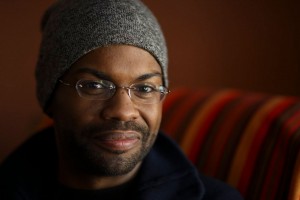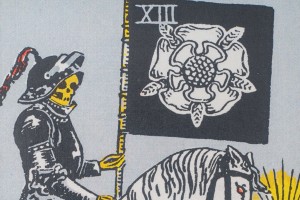When war consumes a nation, the disruption it causes can make it extraordinarily difficult to know what’s actually happening. That’s true not just for those fighting on the ground, but also for the leaders mapping out larger strategies, and for the rest of us trying to keep up with the news.
The sudden and fierce conflict in Ukraine reminds us anew that despite the fire hose of information in the news, on our social feeds and in our daily conversations, much remains opaque. How do we sort reality from illusion — and is it even possible?
Journalist and war correspondent Vicki Barker ’78 has brought a skeptical eye to her reporting throughout her career, which has spanned from the first Gulf War to terror attacks in Paris and Brussels. “There are so many extra layers of verification that you have to do,” she said.
Still, she also knows that there are ways to side-step the sometimes unreliable official channels to get an unfiltered view of war’s impact. While covering the Lebanese war in 2006, she visited a neighborhood pharmacy in Beirut. “A pharmacist will tell you if they’re filling more prescriptions for sleeping pills and anxiety medications,” she said. “It’s a Rorschach test of a local community.”
To illuminate some of the challenges of getting to the truth of war even as it is happening, we talked to faculty and alumni journalists, researchers, writers, artists and historians whose work involves helping people make sense of war and conflict. They shared their behind-the-scenes perspectives about the Ukraine war, as well as the larger lessons they’ve learned from their own experiences with, and studies of, previous conflicts.
Meet Your Guides
Eliza Ablovatski is an associate professor of history at Kenyon and teaches classes on Europe from 1500 to the present. Her book, “Revolution and Political Violence in Central Europe: The Deluge of 1919,” was published last summer.
Monica Cure ’02 is a writer, translator and dialogue specialist who is a two-time Fulbright Award winner. She was a child refugee from Romania who grew up near Detroit and has been living in Bucharest, Romania, for the past three years.
Alexa O’Brien ’95 is an analyst and writer focused on intelligence. Her work has been published in the International Journal of Intelligence and Counterintelligence, the New York Times and the Cairo Review of Global Affairs.
Jeremy Stern ’11 is news editor of Tablet magazine and a non-resident senior fellow at the Atlantic Council. He has written for publications including the New York Times, Wall Street Journal and Foreign Affairs.
Vicki Barker ’78 is a London-based writer and broadcaster. She has done on-the-ground reporting during the terror attacks in Paris and Brussels in 2015 and 2016, the 1991 Soviet coup and the first Gulf War.
Jen Judson ’04 is the land warfare reporter for Defense News. She is president of the National Press Club.
David Rowe is director of the Center for the Study of American Democracy at Kenyon. He teaches political economy, comparative politics and international relations.
Darya Tsymbalyuk ’13 is a researcher and artist from Ukraine. She earned a Ph.D. from St Andrews in Scotland in 2021, and wrote her dissertation on war and stories of displacement from Donbas, Ukraine.
The “fog of war” is real.
German military strategist Carl von Clausewitz is credited with identifying the concept known as “the fog of war” — the uncertainty and confusion that exists among participants in military operations, and the challenges that it creates as states seek to achieve larger political aims through combat.
“When you’re on the battlefield, literally fighting for your life, it’s hard to keep a clear overview of the things that are going on, much less achieving military objectives,” said political science professor David Rowe. “Warfare will always be surrounded by a high degree of uncertainty.”
With confusion reigning from the very source, it is only natural that those farther away from the center of the conflict would struggle to gain clarity on the situation. “The things we’re seeing (through the media) come to us through many different filters,” said Rowe. “We have to assemble a broad overview from different snapshots, in an environment where there are many actors trying to spin what we see.”
Still, there are ways to pierce that fog: For example, journalists have fact-checked claims by pairing videos taken by Ukrainian residents with publicly available satellite images; and amateur radio enthusiasts have tapped into the unsecured communications of Russian tweets.
Sometimes, a single sentence can snap the stakes into clear and heartbreaking focus, like this March 16 tweet by Ukraine native Darya Tsymbalyuk ’13: “Once, (colleague Iryna Zamuruieva) and I were planning to organise an environmental summer school, and instead, we are campaigning for more military aid for our homeland Ukraine.”
The tweet linked to a story on openDemoc-racy.net, an independent international media platform, that was co-authored by Tsymbalyuk and Zamuruieva. In it, they wrote: “Our home is under attack: though we now live in Scotland, both of us grew up in Ukraine and our parents and friends remain there, hiding in basements and metro stations, where their health is deteriorating from cold and lack of sleep, or defending their hometowns in territorial defence units. … Nowhere in Ukraine is safe at the moment.”
Uncertainty can also be used as a tool of manipulation.
Manipulated information reported as truth is anything but new: experts have identified staged war photos from at least as far back as the Civil War. But there’s no question that today’s manipulators are more skilled than ever.
Defense News reporter Jen Judson ’04 said she’s seen her own outlet’s credibility twisted into misinformation: A website that was designed to fool readers into thinking it was Defense News featured fake articles — but used “bylines” from real reporters at her publication.
“It was dispiriting that my flagging of several dozen individual posts as ‘false news’ through Facebook’s own notification system had no immediate effect,” Judson added. “Only after Defense News and Memetica contacted Facebook did the memes disappear en masse.”
If there is one silver lining, said analyst Alexa O’Brien ’95, it is that news professionals are a bit more savvy about the ways open-source information can be used subversively. “I’ve been pleased to see how news professionals — and even the public — have gained information literacy in the last decade, in terms of understanding that open-source information is prey to signaling and deception,” she said. Indeed, a 2019 Pew survey found that 89 percent
of Americans say that they “sometimes” or “often” come across made-up news or information, and more than half have changed the way that they use social media as a result. “I think the techno-utopianism of the information age of the early 2010s blinded some of us to this type of manipulation, and some of us are more discerning now.”
Our desire for coherence nudges us to lean on historical stories and plot points — at our peril.
Associate Professor of History Eliza Ablovatski has spent decades studying World War I, and she is frequently surprised by how resonant the themes of the century-old war remain today.
“In war, there is often a shortage of information,” she said. “And when we lack good information, we still want to make sense of things — so we often use (the building blocks of ) stories we already know (to create meaning).”
During World War I, for example, media reports leaned on analogies that compared the events of the day to those of the French Revolution and Paris Commune — stories that were well-known to readers at the time. Because readers were familiar with these larger narrative frameworks, they could use familiar plot points to imagine what might happen in the future.
In much the same way, Russians have leaned on the stories of World War II and Nazis to frame their own actions and violence, while Ukraine has used the heroism of that same war experience as inspiration to defend itself. “Everyone thinks it’s the Second World War all over again — but nobody thinks they’re a Nazi,” said Ablovatski.
This extreme framing can lead to extreme actions — beyond what the actual circumstances would seem to require, she said. “If you know that horrific things have happened in the past, it’s easy to believe they might be happening again — or even to try to prevent those things from happening by doing crazy, violent things yourself. If (Russian) soldiers really believe that there are Nazis hiding in a (Ukrainian) basement, what things would they be willing to do that they otherwise would never do? The (influence of stories from the past) is powerful, and they are part of the motivation that (can lead) people to commit war crimes.”
To get at the truth, war correspondents and journalists must be resourceful under difficult circumstances.
As a journalist who’s covered conflicts around the world for more than three decades, Vicki Barker ’78 knows all about the swaggering bravado that some war correspondents bring to their work. She’s not among them. She believes that there are often better ways to get meaningful stories that shed light on a war’s trajectory and toll.
In 1990, when she was in Saudi Arabia for more than a month after Iraqi forces invaded Kuwait, she methodically built a friendly relationship with an Air Force colonel over the course of weeks — even as she watched other journalists badger him with demands for his time. Ultimately, her approach paid off: “I was the one who got the phone call at 1 a.m. from (the colonel), telling me that there was a bus in front of the hotel (taking a group to the Kuwaiti border) in 15 minutes,” she said.
Still, many reporters do their work from afar, which requires a different set of skills. Reporter Judson said she’s built her own tool kit considerably in recent months. “I get all kinds of weird emails and messages from social media these days,” she said. (How often? “Almost every hour,” she sighed.) She knows how to do deep dives on social media profiles — from analyzing follower counts to reading months-old tweets — just to see if a source is legitimate. She’s learned to use Yandex (Russia’s primary search engine) and is skilled at using Google’s reverse image search. “You’ve also got to be careful of TikTokers who pretend to livestream from Ukraine, which happens a lot,” she said.
Barker said that no matter the circumstances, war reporting takes its toll, and it’s one that a news audience can’t understand on the same visceral level. “I am in awe of the journalists who are doing live shots for hours every single day, because I know that they probably slept in a smelly, noisy shelter for maybe three hours before they had to get up and be as lucid and in control of the facts as ever,” she said.
And while she hasn’t typically felt unsafe during her reporting, the dangers thrumming just beneath the surface are very real. “When you’re a war correspondent, you have to recalibrate your sense of risk. If you cover war, there’s a chance you’re going to be killed.”
Journalism can sometimes miss the biggest stories.
There’s no question that journalists these days have a robust toolbox to do meaningful war reporting. But Monica Cure ’02, a writer who lives in Romania, believes that journalism isn’t designed to fully capture war’s reality. “In traditional reporting, emotion is often excluded for the sake of objectivity,” she said. “We can talk about accuracy, but ‘the truth’ also requires a kind of emotional accuracy.”
Cure, for example, has found a meaningful connection to Ukraine from the writing community she’s been part of on Twitter. Through that community, she discovered a writer and translator, Kate Tsurkan, who lives in the Ukrainian city of Chernivsti. Since the war started, that writer’s tweets have become a window into the Ukrainian war through her own lived experience. “She has so many important things to say,” Cure said.
That immediate, visceral perspective made Cure much more diligent about finding Ukrainian writers — not just journalists — to follow on Twitter as the war has progressed. Indeed, she says, it may often be best to use trusted connections you’ve already built to find the kind of emotionally honest perspective you might not find elsewhere.
Cure particularly appreciates the tweets of Andrei Kurkov, a Ukrainian writer in Kyiv. Often, she said, the tweets share details that might be considered too trivial for a news report, but that say worlds about the state of a city or the mindset of the country.
One, posted about a week into April, stuck with her. “It was ‘Georgian and Japanese restaurants are open again near Kyiv’s Main Railway Station,” she said. “It gave a feeling that some of the danger had passed. That feeling was so palpable, understandable and relatable.’”
And “experts” may be anything but.
Ukrainian citizen Tsymbalyuk admits that the speed with which her home country has become the center of the world’s attention can sometimes feel disorienting. “I’m grateful for the support, because we need it,” she said. “You’ve seen Russia on a map.”
Still, she acknowledges that she can also sometimes feel frustrated by the sudden attention. “Everybody’s an expert,” she said. “Within a week of the escalation, I saw people organizing panels about Ukraine without inviting a single Ukrainian.”
Often, she said, such panels feel divorced from the reality she knows Ukrainians are experiencing. She’s watched conversations turn to debates about NATO versus Russia and China — without a single word about Ukraine.
Tsymbalyuk said she has declined invitations to participate in such events because of what she sees as the often clinical, removed position of the participants. “I realized I didn’t want to be fighting with people who have no connection (to this war), for whom it’s all just a political game and a moment to shine as an expert with a hot take.”
Our biases are real — but often invisible.
After many punishing years of polarization in the United States, the war in Ukraine seemed to offer a point of agreement across the political spectrum. Left, right and center, nearly everyone seemed to support the Ukrainian desire for sovereignty against Russia’s invasion. And there has been plenty of evidence Ukraine is putting up an exceptional fight.
But Tablet news editor Jeremy Stern ’11 cautions against trusting too much in any narratives that align so closely with our desires. “It’s a natural reaction among Americans to cheerlead for Ukraine,” he said. “If you’re on a platform like Twitter, and frequently liking or engaging with videos showing Ukrainian forces to be triumphant, you’re more likely to be exposed to even more content showing the Ukrainians winning and the Russians losing, which may or may not be what’s actually going on in a given situation.”
Stern said this type of engagement isn’t necessarily bad, as long as we recognize what’s actually happening: “We need to remember that the content we’re consuming online isn’t always a perfectly accurate reflection of reality.”
To see the world as it really is, however, often requires us to spend time feeling true discomfort. “The unpleasant but necessary thing you have to do is follow news outlets and other sources of information that you don’t like and that you find objectionable,” said Stern. “It’s not always good for your own personal happiness.”
For example, he recommends that supporters of Ukraine also follow media outlets and individuals sympathetic to Russians, and vice versa. And while the outlets and individuals you follow might not share your values or even be acting in good faith, you’ll still be more likely to see useful information you may not find elsewhere. “You can’t get a holistic picture of reality without it,” he explained.
Though it is a natural reaction to turn away from difficult truths, it is also an obligation that Americans must take seriously, said Rowe. “As citizens in a democracy, we bear responsibility for what our governments are doing.”
We all benefit when we can bring our sense of humility and humanity to our understanding of war.
Every field has its own framework for collecting and analyzing facts — and each has limitations, said O’Brien. “Journalism, intelligence, law enforcement — they all depend on functional truths and fulfill social roles like doctors or lawyers,” she said. “Intelligence is historically about decision advantage and geopolitical competition, and by its nature it often exists within a field of ambiguity. It is reductive to conclude that because humans are not capable of absolute knowledge, all truths are irrelevant. We need these functional truths to survive and thrive.”
From a faraway perch in the United States, it can be easy to believe that this war is something that is “over there” — an event that affects some things, like our gas prices, but also can feel divorced from our own reality.
But we are all joined in our common humanity, said Cure. “I am in Romania, and I understand that we really are all interconnected,” she said. “Yes, it’s a story about Ukraine, but it’s also about Russia and the dissidents in Russia. It’s also about the people of Romania, the Republic of Moldova, Poland and Germany, who are receiving refugees. It’s their story as well. Ukrainians are creating art and are welcomed into universities and finding jobs in many different places. I hope all of these things will motivate us to search out the news and information, because we see how connected we are to people in different places and from different backgrounds.”
Anna Ivanenko is an illustrator based in Kyiv, Ukraine.


